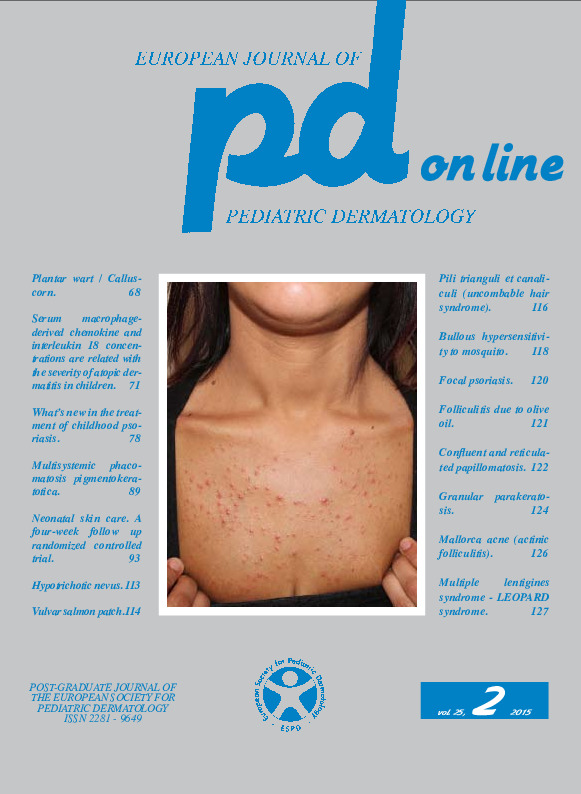Pili trianguli et canaliculi (uncombable hair syndrome).
Downloads
DOI:
https://doi.org/10.26326/2281-9649.25.2.1113How to Cite
Milano A., Resta L. 2015. Pili trianguli et canaliculi (uncombable hair syndrome). Eur. J. Pediat. Dermatol. 25 (2):116-17. 10.26326/2281-9649.25.2.1113.
pp. 116-117
Abstract
Pili trianguli et canaliculi and uncombable hair syndrome are interchangeable terms used to indicate an alteration of the hair clinically characterized by the resistance to all efforts to control it with a comb and microscopically by a triangular shape of the transverse section of the hairs that, when observed along their major axis, have a groove for their entire length; spun-glass hair is another term used to describe this condition. Uncombable hair syndrome was reported for the first time in 1973 (1); it can be transmitted by an autosomal dominant trait, but many cases are sporadic. In the case described by Herbert et Al. (4) two children were affected by the syndrome while the parents were apparently normal. However, the examination of the hair on SEM showed the characteristics of the syndrome as well as in the two brothers, also in the father. The syndrome gets generally evident in the first year of life (2) with silvery blonde, dry, curly, shiny hair and especially with its resistance to the comb; these problems tend to get better over the decades (5); the amount of hair and its tensile strength is normal. On light microscopy the hairs may appear normal or show some darkening along the midline, that betray the groove observed by SEM. On SEM a considerable percentage of hair has the characteristic longitudinal groove; the transverse section of the hair is uneven, more often triangular or kidney-shaped, but it can be normal (3). Uncombable hair syndrome is not usually associated with disorders of other organs or with neuropsychological alterations; however, it may be associated with other syndromes such as ectodermal dysplasia, abnormal enamel (6) and oligodontia, retinal dysplasia / pigmentary dystrophy, digital anomalies, juvenile cataracts (5).Keywords
Uncombable hair syndrome, Pili trianguli et canaliculi

